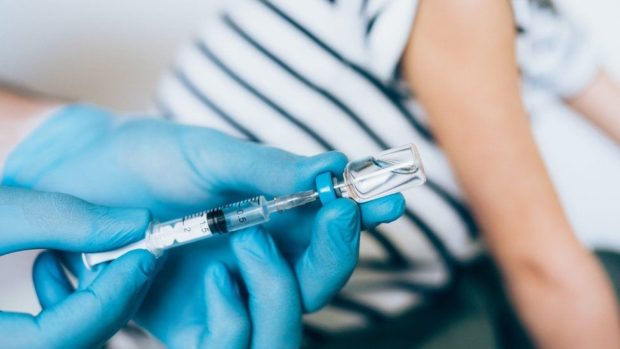“We do not want another crisis on top of this crisis,” declared Dr. Ma. Teresa Caidic, OIC-Division Chief, Local Health Support Division of the Department of Health-Eastern Visayas during one of the virtual events commemorating the National Adolescents Immunization Month. These webinars held in several regions across the country aim to highlight the importance of vaccines in raising healthy children and teens.
Led by the Department of Health (DOH) and supported by local government units and medical associations, the events virtually gathered parents, teens, and stakeholders where experts shared information on vaccine-preventable diseases and updates about the government’s immunization program.
Dr. Caidic pointed out that the country’s healthcare system is continuously being overwhelmed with the COVID-19 pandemic. Thus, addressing immunization gaps has become ever more critical.
“We do not want an outbreak of vaccine-preventable diseases because this will all the more complicate the pandemic crisis,” explained Dr. Caidic. “Acquiring these diseases when we can prevent them is a big blunder. As parents, family members, and friends, we have a role in protecting our children, our friends, our siblings, and the community from a possible disease that will bring suffering to everyone concerned,” she added.
Filipino adolescents, which comprise 22 million youths ages 10-19, are the most neglected segment in society in terms of healthcare, according to Dr. Ma. Emma Llanto, President of the Philippine Society of Adolescent Medicine Specialists.
“This is the most vulnerable group because of their waning childhood immunity while some may have missed vaccine doses,” added Dr. Llanto. “They are also generally inclined to take risky health behaviors but lack the proper knowledge and access to health care.”
Dr. Llanto also maintained how paramount it is to help protect the adolescent population because healthy adolescents may create herd immunity that will help reduce the incidence of vaccine-preventable diseases.
Teenagers need vaccines too
In 2015, the Department of Health started implementing its school-based immunization program in priority areas. In the Eastern Visayas region, pilot provinces included Leyte, Eastern Samar, and Northern Samar. Presently, the DOH is expanding coverage to include other areas in the region.
However, the pandemic has put the acquired gains of school-based immunization (SBI) at risk as children take their classes online at home. Since SBI was stopped during the pandemic, National Immunization Program manager Elena Joy Villarosa, RN of the Department of Health-Eastern Visayas said they would shift to a community-based vaccination program from August to December 2021 so the youth will get continuous vaccine access.
Villarosa also reported that Local Government Units (LGUs) may conduct immunizations in a fixed-point venue, using mobile clinics or drive-thru. To help allay fears of parents and teens, she shared that LGUs are strictly observing COVID-19 health protocols while all healthcare workers are mandated to wear proper personal protective equipment (PPEs).
She pointed out that while the country is to vaccinate more people against COVID-19, we must not forget that adolescents are vulnerable to other vaccine-preventable diseases like measles, rubella, and HPV-related cancers and diseases, among others.
Measles is a highly infectious respiratory disease that can result in severe, sometimes permanent, complications including pneumonia, subacute sclerosing panencephalitis (SSPE), and death. A progressive neurological disorder, SSPE may appear years after a child acquires measles. Manifestations of this disorder include behavioral changes, intellectual disability or failing in school, and seizures.
Latent chickenpox or varicella-zoster virus may eventually reactivate as shingles, which are painful rashes and, in rare cases, may lead to pneumonia, hearing problems, blindness, brain inflammation (encephalitis), or death.
Pregnant mothers who are Hepatitis B positive may give birth to infected infants wherein 90 percent will develop chronic infections while around 25 percent will die prematurely of liver cancer.
Hence, Dr. Llanto recommends the following vaccine types and doses for adolescents: one dose of TDAP (tetanus, diphtheria, and pertussis or whooping cough) and one dose of influenza vaccine (routine) every year. Two doses of MMR (measles, mumps, and rubella), varicella (chickenpox), Hepatitis-A, Japanese Encephalitis Virus, and HPV if administered between ages 9-14 years old only. These are based on the immunization schedule recommendation of the Pediatric Infectious Disease Society, Philippine Pediatric Society, and Philippine Foundation for Vaccination.
Why adolescents should consult their doctors about HPV prevention
Dr. Erwin De Mesa of the Philippine Infectious Diseases Society for Obstetrics and Gynecology shared that HPV is commonly transmitted sexually in both men and women.
“There are more than 100 types of viruses and at least 14 of them are responsible for causing cancer (also known as high risk type). The virus is so common that most sexually active people will at least be infected at some point in their lives,” he said.
“The most challenging thing about HPV is that it’s asymptomatic most of the time,” explained Dr. Mesa. He added that this increases the chances of unknowingly transmitting the virus to a partner. In addition, those that develop symptoms usually discover they have cauliflower-like lesions or genital warts, or precancerous lesions in the cervix during a check-up10. Hence, doctors recommend routine examinations to help detect, evaluate and recommend a course of action before the infection advances into full-blown cancer.
“Cervical cancer is still the second leading cause of cancer in Filipino women with around 7,897 new cases detected every year resulting in about 4,052 deaths annually”, (estimations for 2020) warned Dr. De Mesa.
Tests that may help detect precancerous lesions are pap smear, visual inspection using acetic acid, or HPV DNA test, which is currently available only in facilities with molecular laboratories.
It can take 15 to 20 years after exposure to HPV before cervical cancer may develop in women with a normal immune system. However, for the immunocompromised, it may take only 5 to 10 years.11 Therefore, women have an ample window of opportunity to help prevent cervical cancer through regular screening and by receiving HPV vaccines.
Dealing with vaccine hesitancy

Mayor Frances Ann Petilla of Palo, Leyte stressed the critical role of healthcare providers and frontliners as enablers and trusted sources of science-backed information for healthcare consumers in barangays.
“I encourage you to take every opportunity and every touchpoint with parents to provide necessary information and recommendations to contribute to the success of the immunization program,” she espouses.
Only COVID-19 fears, according to Mayor Petilla, is feeding the vaccine hesitancy in Region 8, so they must “seize every golden opportunity to empower adolescents.”
Vaccines: a lifetime approach
Pediatric infectious disease specialist Dr. May Emmeline Montellano of the Philippine Foundation for Vaccination underscores that globally, vaccines have prevented an estimate of 2.5 million deaths among children younger than age five every year.
This was affirmed by DOH-Eastern Visayas Regional Director Dr. Exuperia Sabalberino, saying that the youth needs every opportunity to have an empowered and healthy lifestyle by enhancing information campaigns and immunization efforts amid vaccine hesitancy challenges.
ADVT.









































